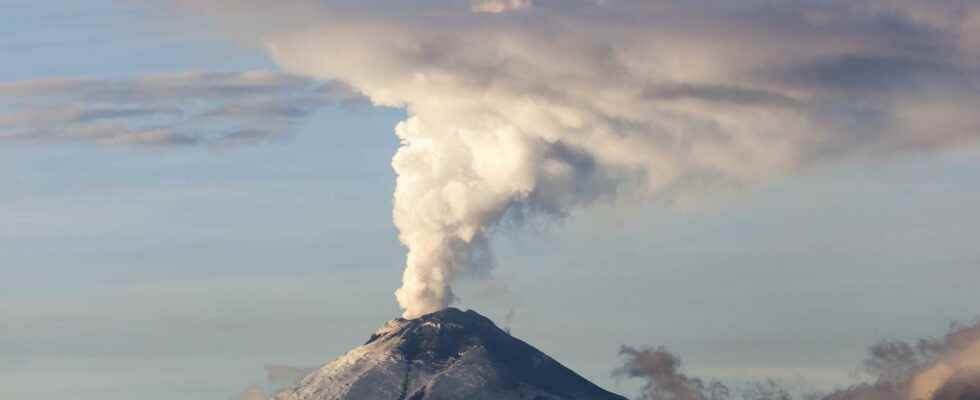You will also be interested
[EN VIDÉO] Kilauea volcano eruption Cascading lava plunges into the lake in multiple places, causing local upwellings. When the waterfalls enter the lava lake, they cause the surface of the lake to slide and pull pieces of cooled crust below the surface.
Since the origin of Earththe volcanic eruptions are almost daily on the surface of the globe. Often minor or at least without significant impact on the environment, some can however be particularly powerful and devastating.
Throughout its history, Man has thus experienced several major volcanic eruptions, including the explosion of Tambora (Indonesia) in 1815, which had significant repercussions on the climate and was in particular at the origin of a year “without summer” in 1816. Thera eruption 3,600 years ago would also have been particularly devastating. Both of these events are considered to be in the VEI-7 (volcanic explosivity index) category, on a scale of 1 to 8. While humanity has experienced, and is still experiencing, countless lower VEI eruptions or equal to 6, category 7 events like the Tambora or Thera explosion are extremely rare, and there is no example of a category 8 eruption in recent human history. The most recent eruption of this type would date back to -26,500 years ago, and would be linked to the eruption of volcano Taupo in New Zealand. To compare, the recent eruption of Hunga Tonga-Hunga Ha’Apai would be category 4 or 5. Considering the damage caused by this eruption, one can imagine the magnitude of the disaster if an eruption of VEI-8 occurred today.
The last ice age was marked by 69 major eruptions
However, this is not unlikely. A recent study shows that a series of mega-eruptions impacted the Earth during the last ice age, around 60,000 to 9,000 years ago. The traces of 69 events of power greater than that of the Tambora have indeed been found in the ice archives in Antarctic and in Greenland for this period.
Major eruptions indeed impact the composition of theatmospherereleasing large amounts ofsulfuric acidwhich will disperse all over the globe, and in particular be trapped in the ice of the polar caps. From ice cream carrotsthe scientists were thus able to date and measure the quantity of sulfuric acid trapped, which enabled them to estimate the power of the various eruptions that occurred during this period.
The results, published in the journal Climate of the Past, show that among the 85 eruptions recorded during this study and having had a global impact, 69 can be considered as mega-eruptions, of greater power than that of Tambora. Twenty-five of them are more powerful than anything known to mankind for 2,500 years and two are more powerful than the Taupo eruption in New Zealand. The study shows that over the period studied, the frequency of eruptions is rather comparable to the current frequency. The period of deglaciation (between 16,000 and 9,000 years ago) is however marked in Greenland by a notable increase in events eruptive, and in particular those of very high intensity. This finding confirms the hypothesis that isostatic rebound associated with melting ice in the northern hemisphere would have caused an increase in volcanic activity. The melting of the ice caps modifies the mass weighing on the continental crust and in fact generates stress modifications, destabilizing certain volcanic systems.
Eruptions from VEI-8 remain very rare
If the quantity of mega-eruptions seems to have been more important in the past compared to the recent history of the Earth, the authors however underline the fact that eruptions of VEI-8 remain rare. Tambora-powered events seem to occur approximately once or twice every thousand years.
This study could also lead to a better understanding of the extent to which climate responds to a change in atmospheric composition, whether through the supply of CO2 of volcanic or human origin. The study of the sensitivity of the climate to these large eruptions could thus make it possible to better constrain the climate models and to better anticipate the current evolution of the climate.
Interested in what you just read?
